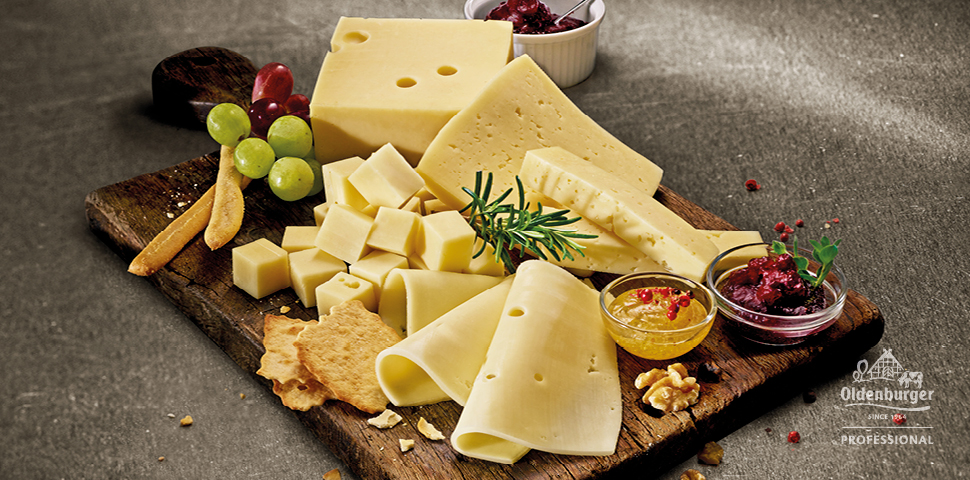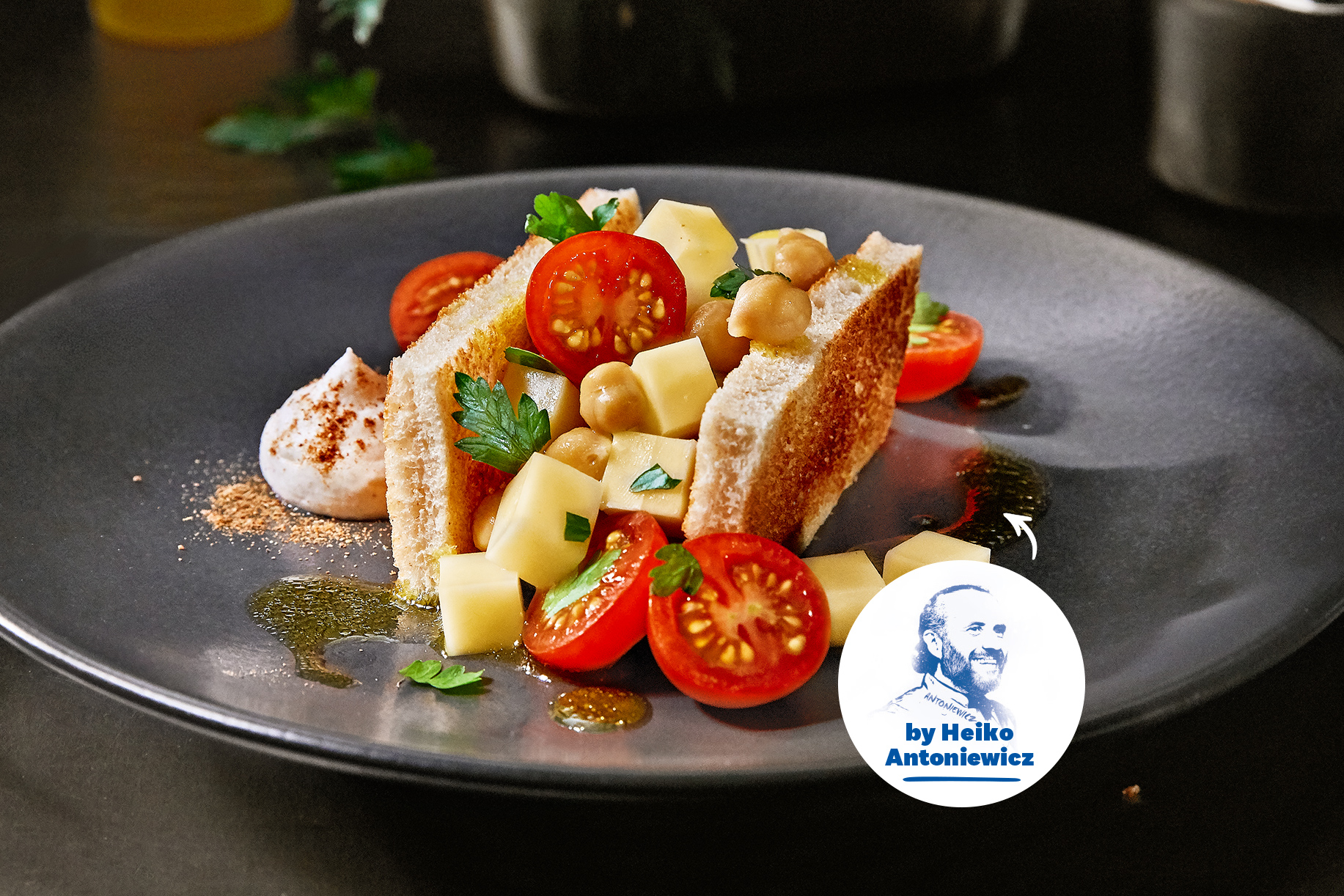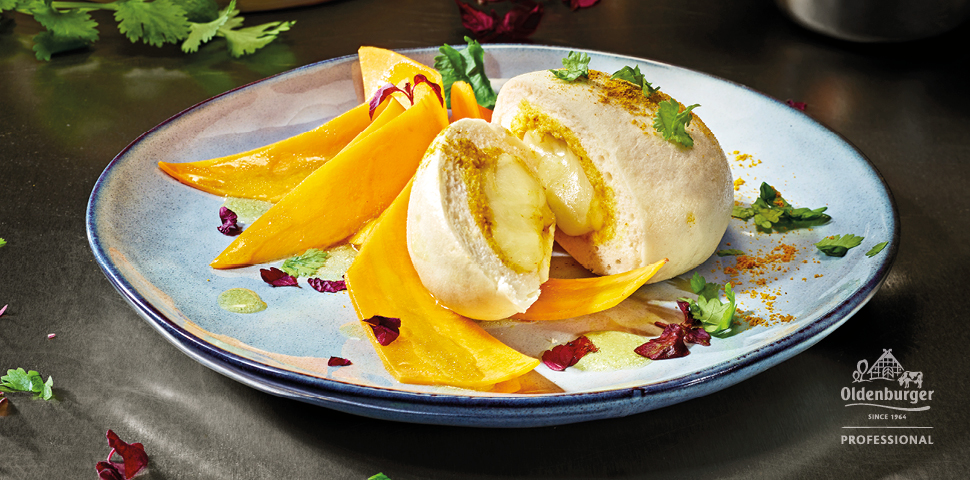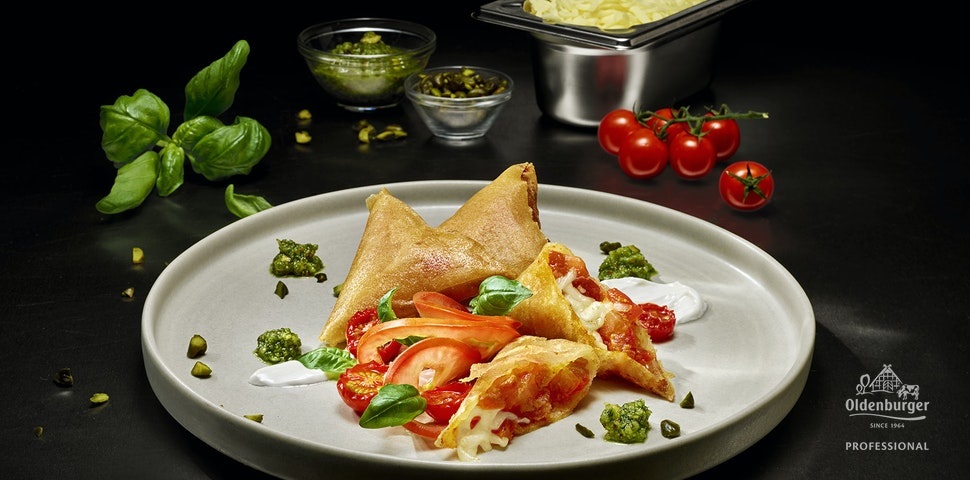Creative Snacks with Cheese
About 10,000 years before Christ, when people started keeping and milking animals, the first cheeses were made - purely by chance. After milking, the milk was stored in clay pots. In summer or when the milk pots were near the fireplace, the lactic acid bacteria became active. The milk began to curdle and the first cheese was made. Since then the variety of cheeses has increased enormously. In the 19th century, the cheese trade received a major boost from the invention of the milk centrifuge, the development of heat treatment processes, and breeding of cows with greater milk yields. There are now more than 4,000 different types of cheese worldwide. Every country has its specialties.

Cheese: Wide variety for creative snacks
Cheese is actually nothing more than milk in concentrated form. Or more precisely, milk without water. The numerous types of cheese differ in the milk used, the fat & moisture content, the ripeness, the appearance and of course the taste. Hard cheese like Parmesan or Emmental has the highest dry matter content. Softer and easier to slice is semi-hard cheese like Gouda, Edam and Tilsit. With their higher moisture content semi-soft cheeses like blue cheese and soft cheeses like Camembert or brie are a much more difficult to slice. Fresh Cheese has the lowest dry matter content of all cheese types. Typical for these spreadable cheeses are mascarpone or cottage cheese. Another type is pasta filata. It is made by letting the curds rest for a while and then steeping them in a bath of very hot whey or water. Then the mass is kneaded and stretched to form a soft dough which is finally shaped into individual cheeses. The best-known example is Mozzarella.

International Snacks
As versatile as the selection of cheeses is, the natural product can be used in several cold and warm dishes. Oldenburger Cheese, for example, is ideal for trendy international snacks – whether Italian pizza, Asian dim sum or oriental bread salad. The classic mildly Oldenburger Edam and the mildly aromatic Oldenburger Gouda harmonize perfectly with tomatoes, bread and chickpeas and give the Fattoush Salad a special taste. Oldenburger Mozzarella is perfect as a filling for dim sum or as a topping for pizza. With its excellent melting, stretching and browning properties, it is particularly suitable for hot dishes. Here you can find more information and delicious recipes with Oldenburger Cheese.

A cheese that surprises chefs
Mozzarella cheese is a popular Italian cheese specialty made from fresh milk. In the region around Naples, Italy, mozzarella is traditionally made from buffalo milk, while most other mozzarella is made from fresh cow’s milk. It is formed into small balls and sold in brine, so it only has a short shelf life. Oldenburger Mozzarella is also made from fresh, pasteurized cow's milk according to the traditional recipe. However, it contains less moisture and can therefore be used much more flexibly than the classic version. At Oldenburger, mozzarella is processed further, eliminating excess liquid to obtain a sliceable cheese. It is shaped into block or loaves and sliced or grated. Our mozzarella can therefore be stored and sliced just like any firm cheese, making it wonderfully convenient for use in hotels, restaurants and catering.A sensitive product
Cheese is very versatile, but also sensitive. Incorrect storage can quickly reduce quality. Cheese e.g. can suffer damage if exposed to very low temperatures, heat, light or draughts. To prevent hard and semi-hard cheeses from quickly going bad, it is important to ensure the proper storage temperature. This should not exceed +8 °C. Hard cheese can withstand temperatures down to zero degrees Celsius. However, temperatures under six degrees Celsius prevent aroma formation.
Cheese should be prevented from drying out and changing its taste. We recommend keeping it in the original packaging or, after slicing, wrapped in cellophane. Light changes the milk fat in cheese, leading to an unpleasant smell and taste. It also causes vitamins to be lost. Cheese should therefore be stored in a dark place such as a cold storage room. Grated semi-hard cheese should be consumed immediately. It begins to get moldy within just a few days. Grated hard cheese like Parmesan can be stored in the refrigerator for two to three weeks after the package is opened. Here you can find more information about the handling and storage of Cheese.




